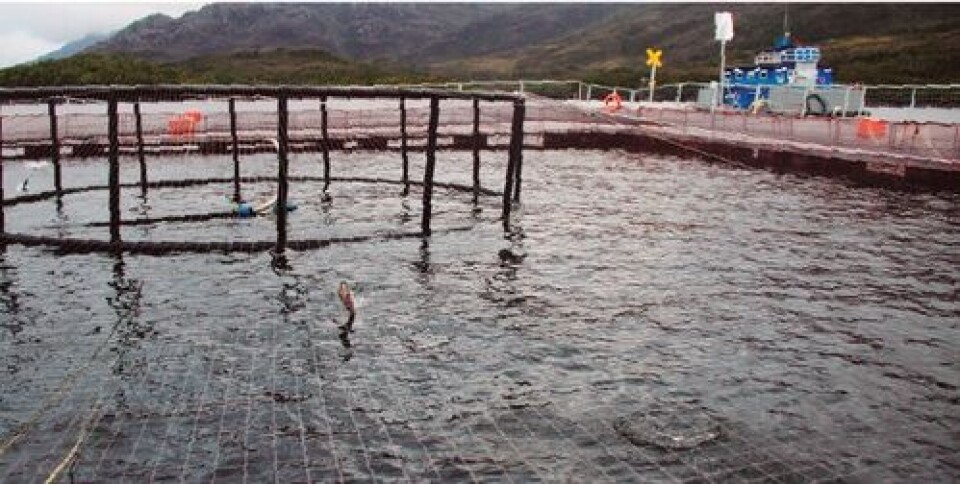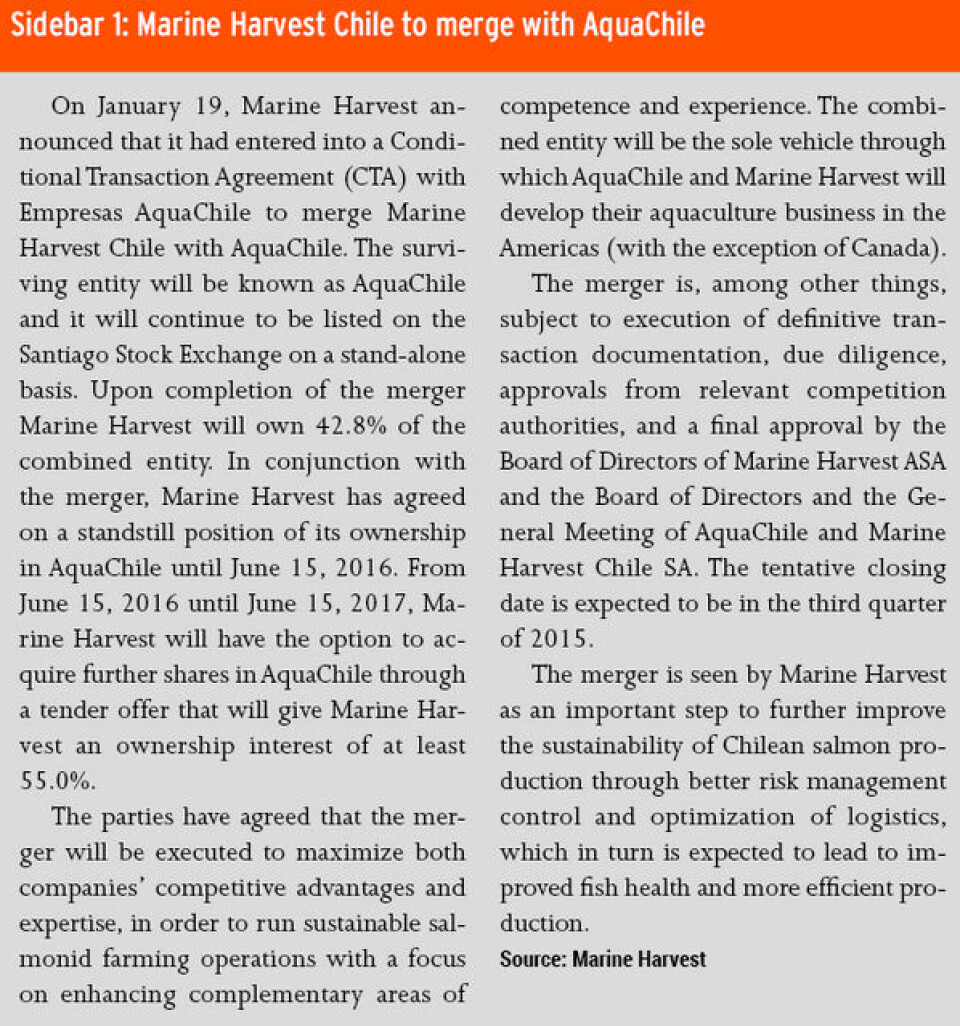Prices tarnish impressive production results

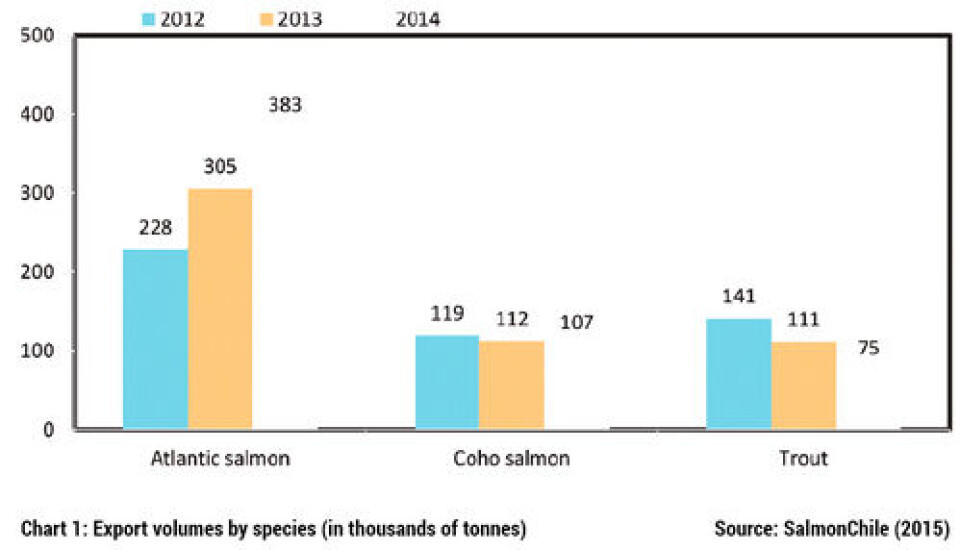
Large production volumes, good sanitary results and high average prices have not coincided in the Chilean salmon farming industry for some time. In every one of the past ten years, one or two of these factors was not present and, as a consequence, many Chilean companies have been unable to completely recover from the economic issues that arose during last decade’s ISA crisis. Last year was no exception. Although it looked set to be a good year, prices started decreasing in the United States around week 21, just after recording the best price for 2014 (US$ 5.4 per pound). Before the end of the year, the price had fallen below US$ 4 per pound. In the meantime, the financial repercussions left over from the ISA crisis seem to have fostered consolidation in the industry. Many companies that went into, or approached, bankruptcy were absorbed by other players or are awaiting decent offers. One example of this consolidation process is Marine Harvest, which bought Acuinova last year and immediately climbed from the 9th to the 4th highest Chilean salmon exporter. If the company succeeds in merging with Aquachile, as it currently intends to, it will became the largest Chilean salmon exporter by far.
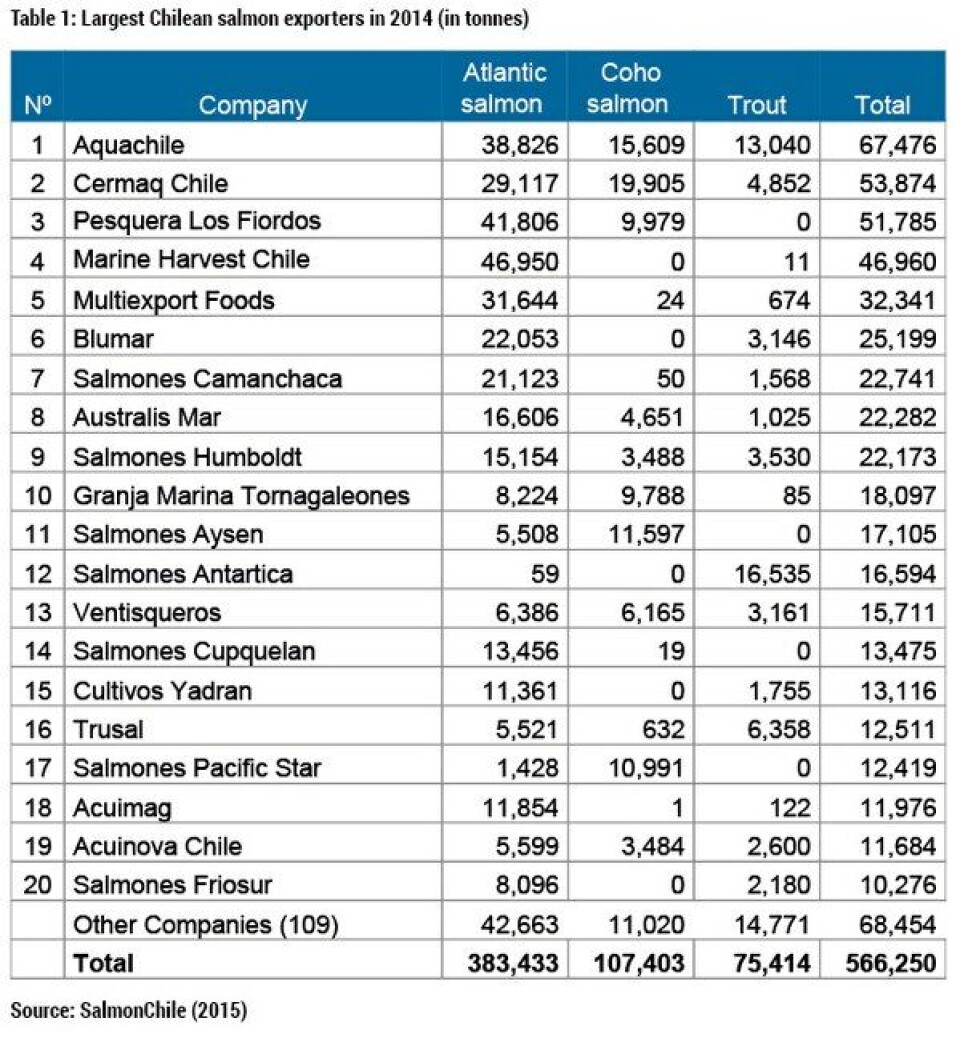
Atlantics on the rise Increased Atlantic salmon harvests last year offset the considerable decreases in both coho and trout numbers. Harvests of trout have been progressively decreasing since 2013, allegedly due to sanitary problems, mainly related to the bacterial disease Piscirickettsia salmonis. Chile’s salmonid harvest totalled 842,087 tonnes in 2014, representing a 7.8 per cent increase compared to the previous year (781,469 tonnes) according to preliminary figures submitted by the Chilean Under-Secretariat of Fisheries and Aquaculture (Subpesca). A comparison of results itemized by species shows a 23.8 per cent increase in Atlantic salmon harvests, from 492,622 tonnes to 610,075 tonnes; a 13.8 per cent decrease in rainbow trout harvests, to 124,468 tonnes; a 25.1 per cent decrease in coho salmon harvests, to 107,544 tonnes; and a 100 per cent decrease in king salmon harvests, down to zero tonnes. In terms of proportions, Atlantic salmon represented 72.4 per cent of all Chilean harvests of salmonids, rainbow trout 14.8 per cent, and cohos 12.8 per cent.
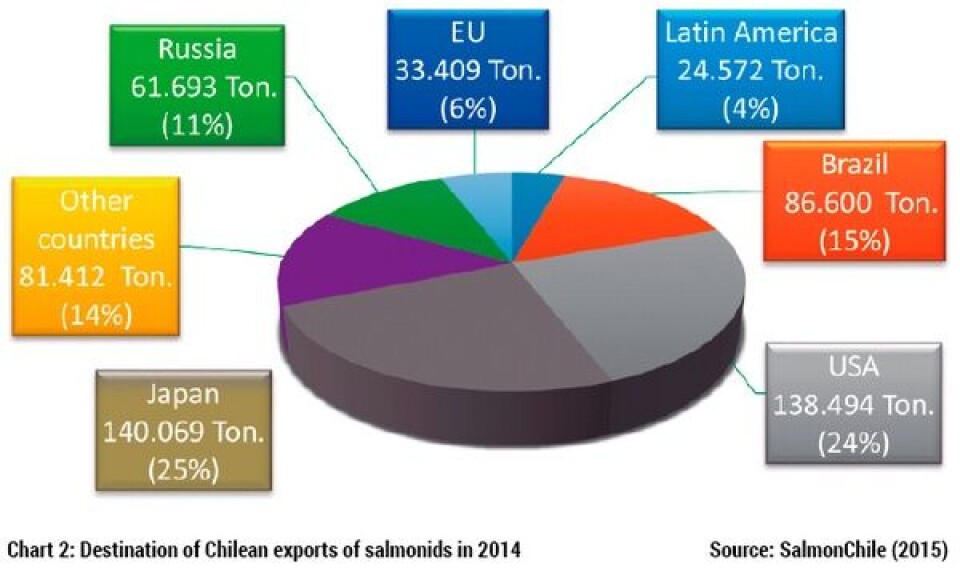
Increased volumes and returns According to information provided by the Association of the Chilean Salmon Industry (SalmonChile), the industry exported 566,250 tonnes of salmonids in 2014, worth US$ 4,361b – up by 7.3 per cent and 24.0 per cent in terms of volume and value respectively. In terms of volume, Atlantic salmon represented 68 per cent of all Chilean salmonid exports, trout 13 per cent, and cohos 19 per cent. In terms of value, Atlantic salmon represented 69 per cent, trout 16 per cent, and cohos 15 per cent (see Chart 1). Meanwhile, the 20 largest exporters represented 87.9 per cent of all exports of salmonids in terms of volume, while the remaining 109 exporters accounted for the remaining 12.1 per cent (See Table 1).
Lower volumes to Japan In terms of volumes, Chilean exports to most markets, apart from Japan, increased in 2014. Despite this, Japan remained the largest market for Chilean salmonids in terms of volume (see Chart 2). According to figures from SalmonChile, the country exported 140,069 tonnes to Japan last year – a 5 per cent decrease compared to the previous year and a 29 per cent decrease compared to 2012. Shipments of salmonids to the US totalled 138,494 tonnes, representing an 11 per cent increase compared to 2013 and a 30 per cent increase compared to 2012. A similar situation was experienced in Brazil, where exports totalled 86,600 tonnes – up 10 per cent compared to 2013 and 28 per cent compared to 2012. After the sanctions imposed by Moscow against agricultural imports from several countries last August – including salmon from Norway and the EU – Chilean exports of salmonids to Russia grew, reaching a total of 61,693 tonnes, representing a 17 per cent increase compared to 2013 and a 182 per cent increase compared to 2012 (see Chart 3).
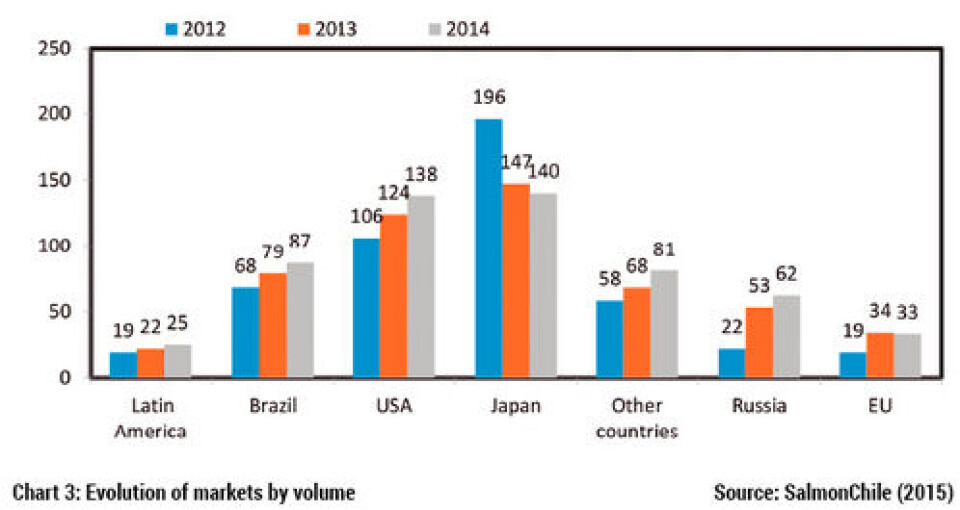
Increased supply reduced prices Most markets produced good prices in the first half of 2014, but prices plummeted in key markets in the second half-year, allegedly due to oversupply. The average price of Chilean Trim-D salmon fillets C+F in Miami remained above US$ 4.70 per pound (US$ ~10.36 per kg) during the first 27 weeks of 2014, peaking in week 20 (US$ 5.45 per pound). However, after week 27 a sharp decline in prices began, dropping to US$ 3.69 per pound in week 49. More recently, according to information published by Salmonex, the price has progressively started recovering in the US and by mid-February 2015 was at an average of over US$ 4.16 per pound. Marine Harvest commented that: “the Urner Barry reference price for Chilean salmon was down by 13% compared to the fourth quarter of 2013 due to increased supply in the North American market. Even if all European salmon, with the exception of Faroese salmon, currently is banned in Russia, the lack of customer guarantees and the sudden reduction in the Russian purchasing power distorted Chilean sales to this market in the period. The resulting increase in salmon supply in the US market has been substantial compared to the same period one year ago, which is the driver behind the low market price in the quarter. The price achieved for salmon of Chilean origin was 13% above the reference price in the quarter, with the primary driver being good price achievement in the US spot market compared to the reference price.” Marine Harvest attributed the growth in production to higher yields per smolt released, largely caused by the introduction of the sea lice drug Salmosan. “The underlying biological situation in the region is, however, still concerning, and underlying improvements are required to meet sustainability metrics,” the company warned. According to Salmonex, fish of 10-12lb (~4.5-5.4 kg) experienced a significant price decrease in Brazil 2014. The average price remained over US$ 6 per kg for the first 25 weeks, but then started decreasing and fell below US$ 4.50 per kg by the end of the year. By mid-February 2015 it was back up to US$ 5.83 and climbing. Finally, the Japanese market was more stable for cohos and trout. The first ranged from ¥ 690 (US$ ~6.32) to ¥ 855 (US$ ~7.11) per kg, while the second species ranged from ¥ 760 (US$ ~5.74) to ¥ 960 (US$ ~7.98).
Mergers and acquisitions Financial problems left over from the ISA crisis between 2007 and 2010 seem to have fostered a new consolidation process in the Chilean salmon industry, which started in 2013 and continued in the past year. Apparently, it will continue in 2015. Among last year’s significant transactions, Australis Seafoods sold its broodstock programme (Landcatch Chile) to AquaGen for US$ 11.4 million in February; Salmones Humboldt purchased the salmon producing company Comercial Mirasol for US$ 8.5 million in May; Marine Harvest bought one of Pescanova’s former salmon companies, Acuinova, for US$ 120 million in September; while EWOS purchased the other ex-Pescanova salmon company, Nova Austral, for US$ 183 million in October. Finally, in a global move, Mitsubishi purchased Cermaq for US$ 1,400 million, a transaction that also included all Chilean assets of the formerly Norwegian company. This phenomenon might continue this year, with a plan merge the assets of Marine Harvest Chile with those of AquaChile (see Sidebar 1).
